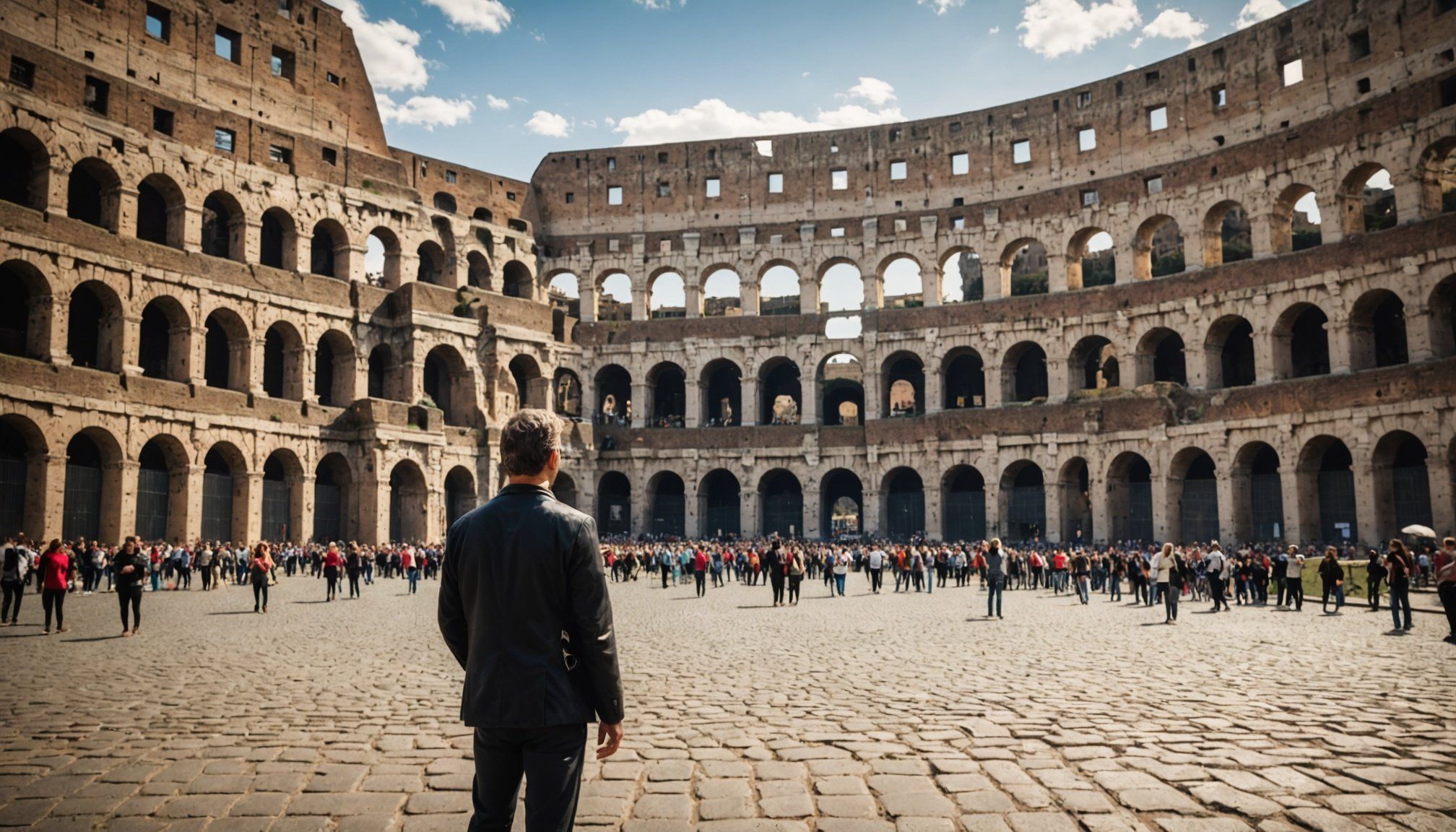Visiting the Colosseum is an unforgettable journey into ancient history. This iconic landmark, located in the heart of Rome, offers more than just stunning architecture. It’s a reminder of the grandeur of the Roman Empire and a hub for engaging stories waiting to be uncovered. This guide equips you with essential tips, ticketing details, and insights to enhance your experience, ensuring you make the most of your visit to this majestic arena.
Overview of the Colosseum
The Colosseum, an icon of ancient Rome, stands at the heart of Italy’s capital city, drawing over six million visitors each year with its historical significance and architectural grandeur. Originally commissioned by Emperor Vespasian in 70 AD, it was completed under his successor, Emperor Titus, in 80 AD. This architectural marvel once hosted gladiatorial games, capable of seating over 50,000 spectators, and remains a symbol of the Roman Empire’s prowess. To explore ticket options and maximize your visit, consider visiting visit-colosseum-rome.com where information on purchasing in advance and guided tours are available.
Also to discover : Discover where to buy borghese gallery tickets today
The Colosseum’s popularity peaks during the summer and around major historical events, necessitating advance planning. Tickets often sell out, especially during high season, making early purchases vital for accessing the Colosseum, Roman Forum, and Palatine Hill seamlessly. Touring the Colosseum not only offers a glimpse into the past but also provides breathtaking views from its elevated structures. As you plan your visit, remember that understanding the layout and history of the site enhances the overall experience, creating memories of this ancient wonder.
Essential Visitor Information
It’s essential to familiarize yourself with ticketing options and visiting hours to ensure a smooth and rewarding experience when exploring the Colosseum.
Also to discover : Find out the best places to purchase borghese gallery tickets
Ticket Purchasing Options and Types
When planning your visit to the Colosseum, securing your tickets ahead of time is crucial due to its immense popularity. It’s wise to purchase tickets online from reliable sources like Tiqets or GetYourGuide. These tickets often include entry to the Colosseum, Roman Forum, and Palatine Hill, offering a comprehensive experience of Ancient Rome’s grandeur. Consider group tickets if traveling with more than eight people, available through partners like groupsightseeing.com.
Detailed Opening Hours Throughout the Year
The Colosseum opening hours vary seasonally. Generally, from January to February and the end of October to December, it opens at 8:30 a.m and closes early at 4:30 p.m. From March to September, closing times extend to as late as 7:15 p.m. Planning around these times allows you to explore without rush, maximizing your experience.
Strategies for Avoiding Long Wait Times
To avoid lengthy queues, visiting during early mornings or late afternoons is often recommended as the best time to visit the Colosseum. Opting for skip-the-line tickets or guided tours also significantly reduces waiting time. Additionally, visiting during off-peak months further alleviates crowd-related stress, enhancing your Colosseum experience.
Navigating Your Visit
Familiarizing yourself with transportation routes and how to manage the crowds can make your visit to the Colosseum more enjoyable and stress-free.
Transportation Options and Directions to the Colosseum
Getting to the Colosseum is quite convenient thanks to Rome’s efficient public transport network. Visitors can take Metro B to the Colosseo station, which is just a short walk from the site. Numerous bus lines also serve the area, providing further accessibility. For those opting for taxis, ensure the meter is running to avoid overpriced fares. If you’re planning to drive, be cautious of Rome’s challenging city center roads and limited parking availability.
Tips for Managing Peak Crowd Times
The Colosseum is a favorite, welcoming over six million visitors annually. To maneuver the bustling crowds, consider visiting during off-peak hours, such as early in the morning or late in the afternoon. Advance booking of tickets or guided tours can also save time, as these often include skip-the-line benefits, smoothing your entry.
Recommended Walking Routes
While in the vicinity, explore some picturesque walking routes to fully experience the Colosseum’s grandeur and nearby attractions. Start at the Colosseo Metro Station, head toward the Arch of Constantine, and continue to the Roman Forum. This path allows engagement with the remarkable historical landscape, catering to both casual strollers and history enthusiasts alike.
Enhancing Your Colosseum Experience
Whether through expert tours or capturing memorable photographs, there are plenty of ways to enrich your time at the Colosseum and make the most of your visit.
Overview of Guided Tour Options and Benefits
Guided tours of the Colosseum are a fantastic way to uncover the depths of its historical significance while skipping the lengthy lines. Opting for a guided tour ensures that your visit is richly informative, as expert guides share insights into the Colosseum’s architectural marvels and the ancient Roman history ingrained in its walls. These tours often include entry to adjacent sites like the Roman Forum and Palatine Hill, offering a comprehensive view of ancient Rome without the hassle of purchasing multiple tickets.
Best Photography Spots and Tips
For those looking to capture the grandeur of the Colosseum, several photography tips can enhance your experience. The best time to visit is early morning or late afternoon for dramatic light. Key vantage points include Oppian Hill and the exterior near the Colosseo Metro Station, where you can avoid the main crowds and capture the structure in splendid isolation. Utilize these spots to master smartphone photography and immortalize your visit with stunning images.
Suggested Nearby Attractions
Completing your visit to the Colosseum, nearby attractions like the Arch of Constantine and Oppian Hill provide additional historical context without requiring entry tickets. For a broader experience, don’t miss exploring the Roman Forum where tales of ancient Rome come alive.











